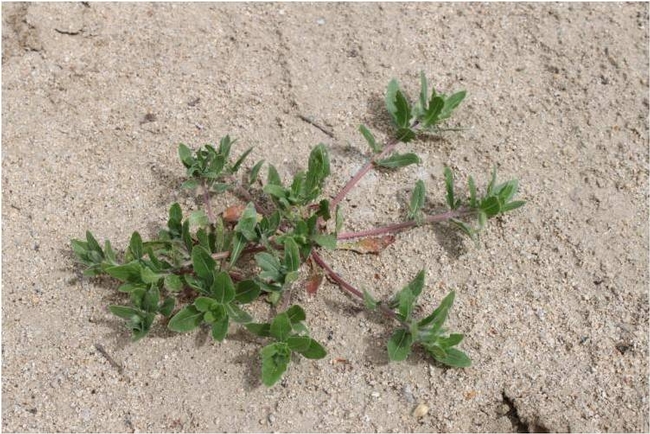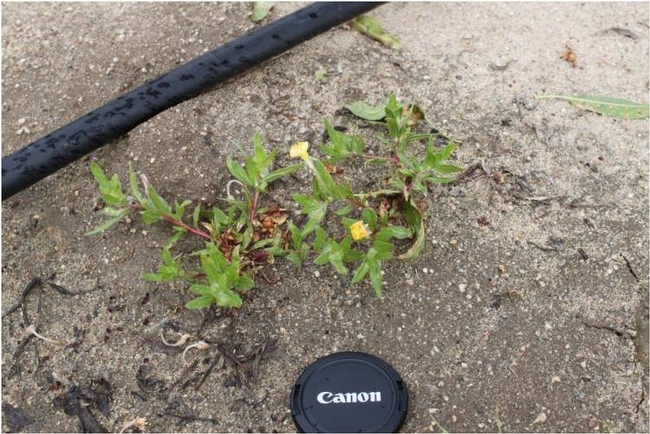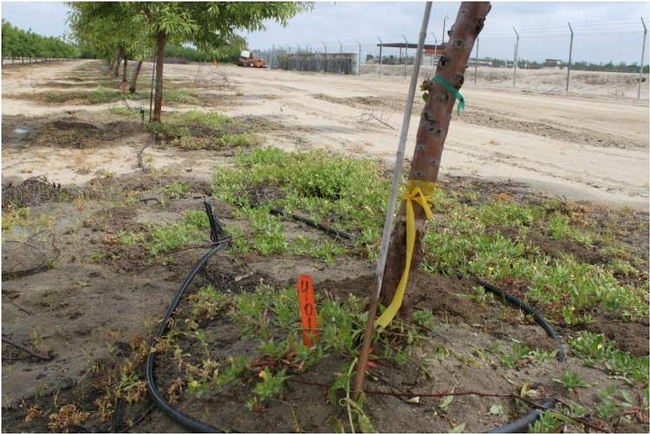May 16, 2011
Today I thought I'd share a few photos of a weed that is becoming more common in orchards in some areas of the Central Valley. I've gotten a few calls and ran across a few infestations of cutleaf eveningprimrose (Oenothera laciniata). This photo was taken in an almond orchard near Shafter, CA in early-April when it was about 6 inches across.

Weeds of California and Other Western States describes cutleaf eveningprimrose as a spreading to erect annual, biennial, or short lived perennial. At the early stages, this plant is usually sparsely hairy and leaf margins can be smooth or toothed. As the plant gets bigger and begins to spread, the leaf margins are usually deeply lobed (ie. "cutleaf"). The flowers are fiarly sparse, usually yellow to orange, and usually self-polinated. This photo was taken a few weeks later in late-April at early flowering.

I've had a few calls suggesting that this weed is hard to control in orchards using a glyphosate-based weed control program. I have not had the opportunity to formally test for resistance; however, I suspect that it is more likely a case of tolerance due to growth habit and its hairy phenology. We have seen many cases of "weed shifts" in response to herbicides - probably more shifts than actual cases of resistance. In either case, overreliance on one mode of weed control (chemical or non-chemical) can lead to weed populations dominated by species that avoid, tolerate, or are resistant to the control method.

In my only trial with a population of cutleaf eveningprimrose, most of my preemergence treatments effectively controlled the weed. These consisted of early February applications containing Alion 200, Goal 2XL, Prowl H2O, Matrix, Pindar GT, Chateau, and Gallery T&V with either a glyphosate herbicide, Treevix, or Rely 280 as a tankmix partner. In the photo above, plot 401 was an untreated control and is pretty full of cutleaf evening primrose (and yellow nutsedge). Conversely, the adjacent plots and the rest of the experiment were just full of yellow nutsedge!
There are a few other related species also found in the state. Primarily Hookers's eveing primrose (Oenothera elata ssp hookeri), common eveningprimrose (Oenothera biennis), and showy eveningprimrose (Oenothera speciosa).
Take care,
Brad
Topics: